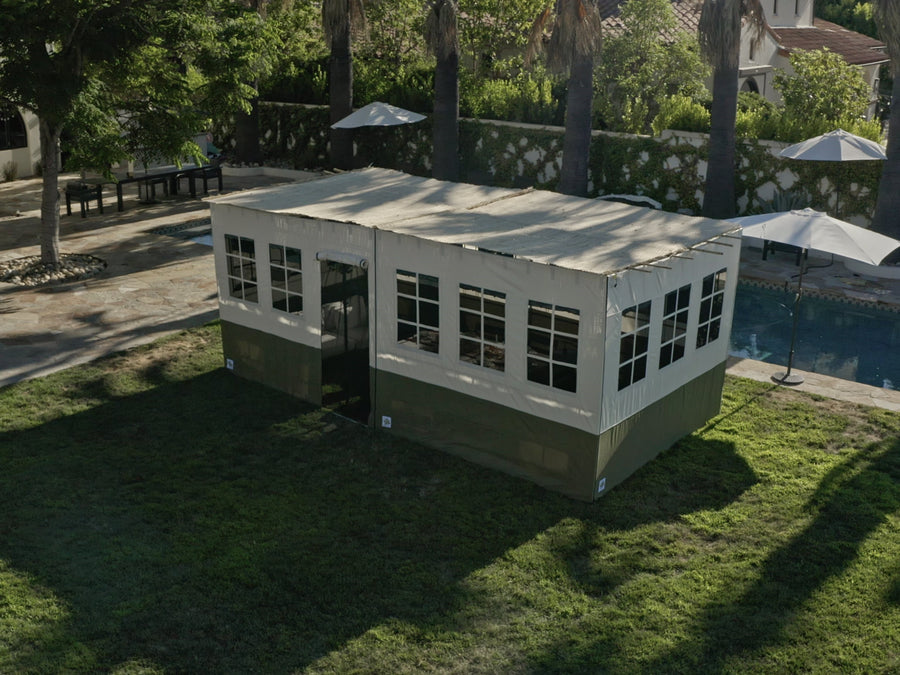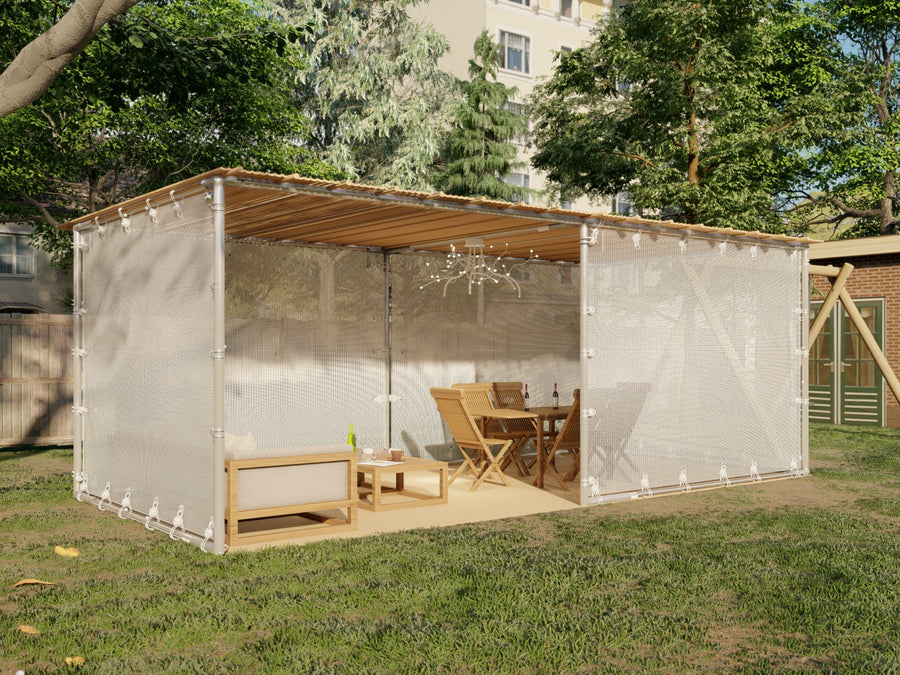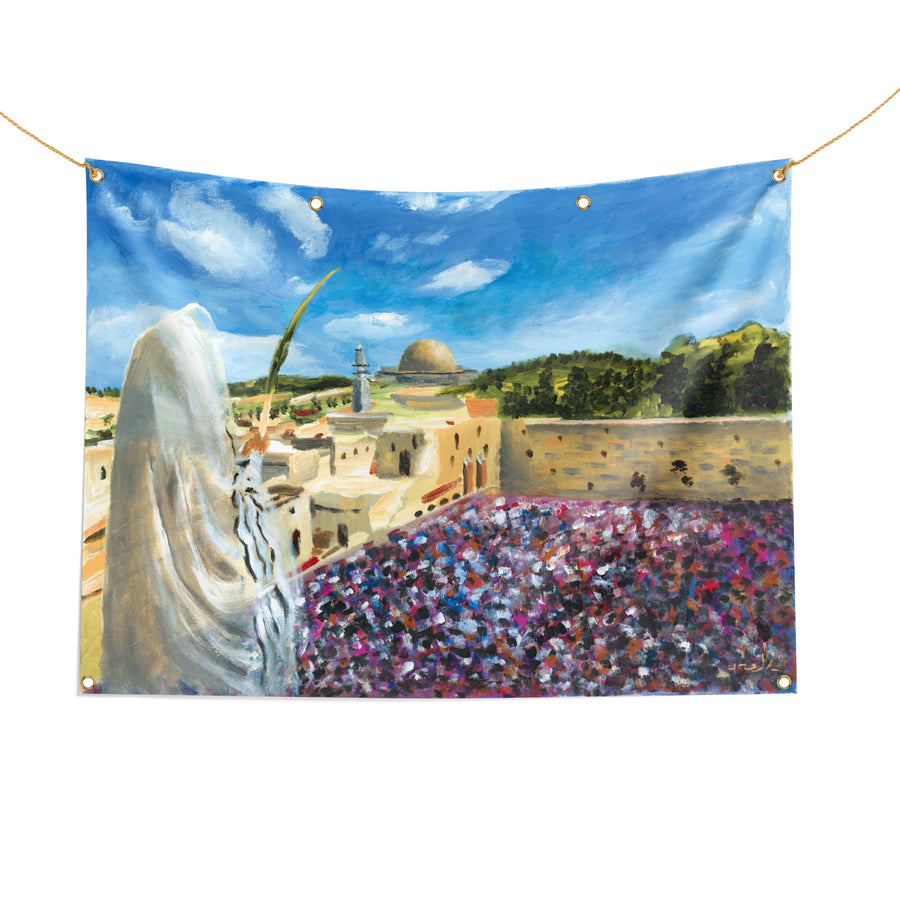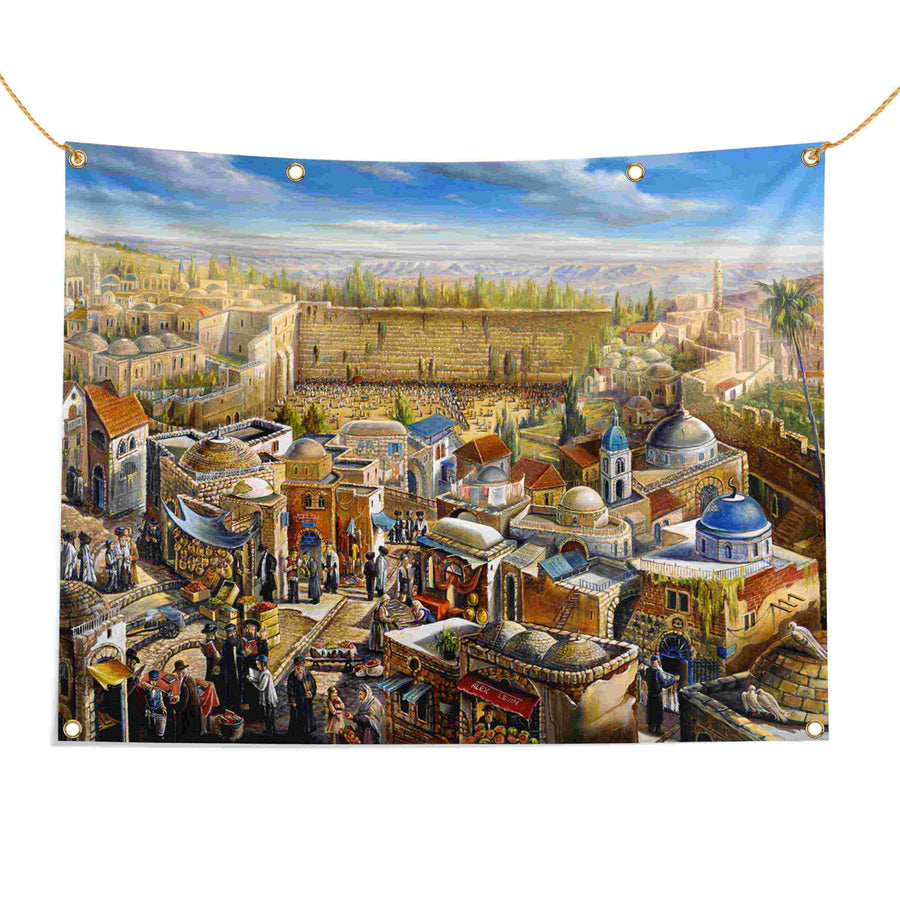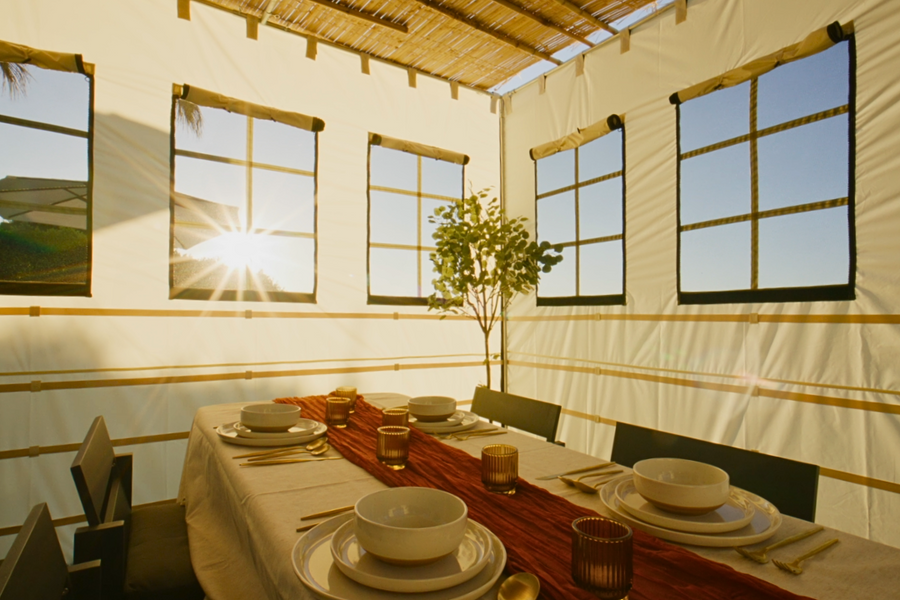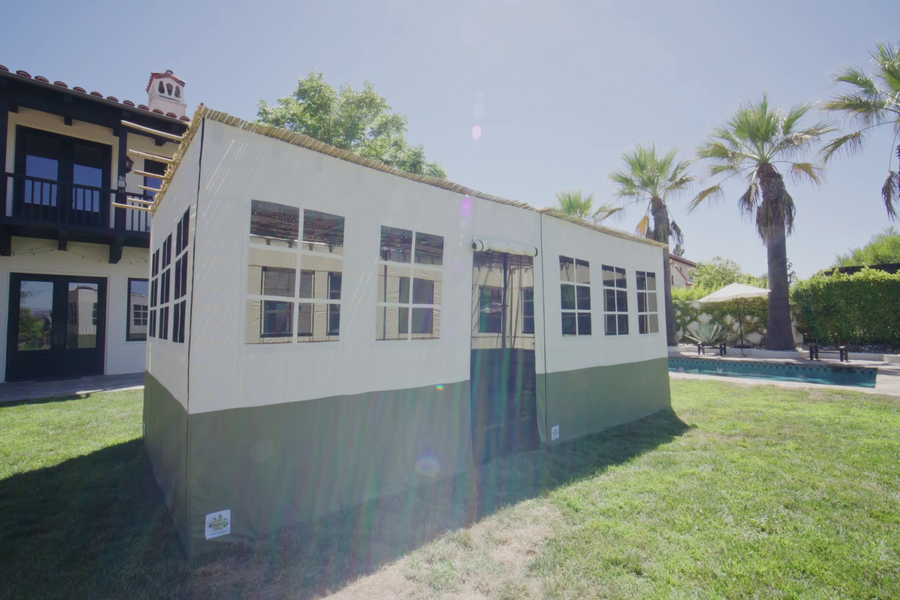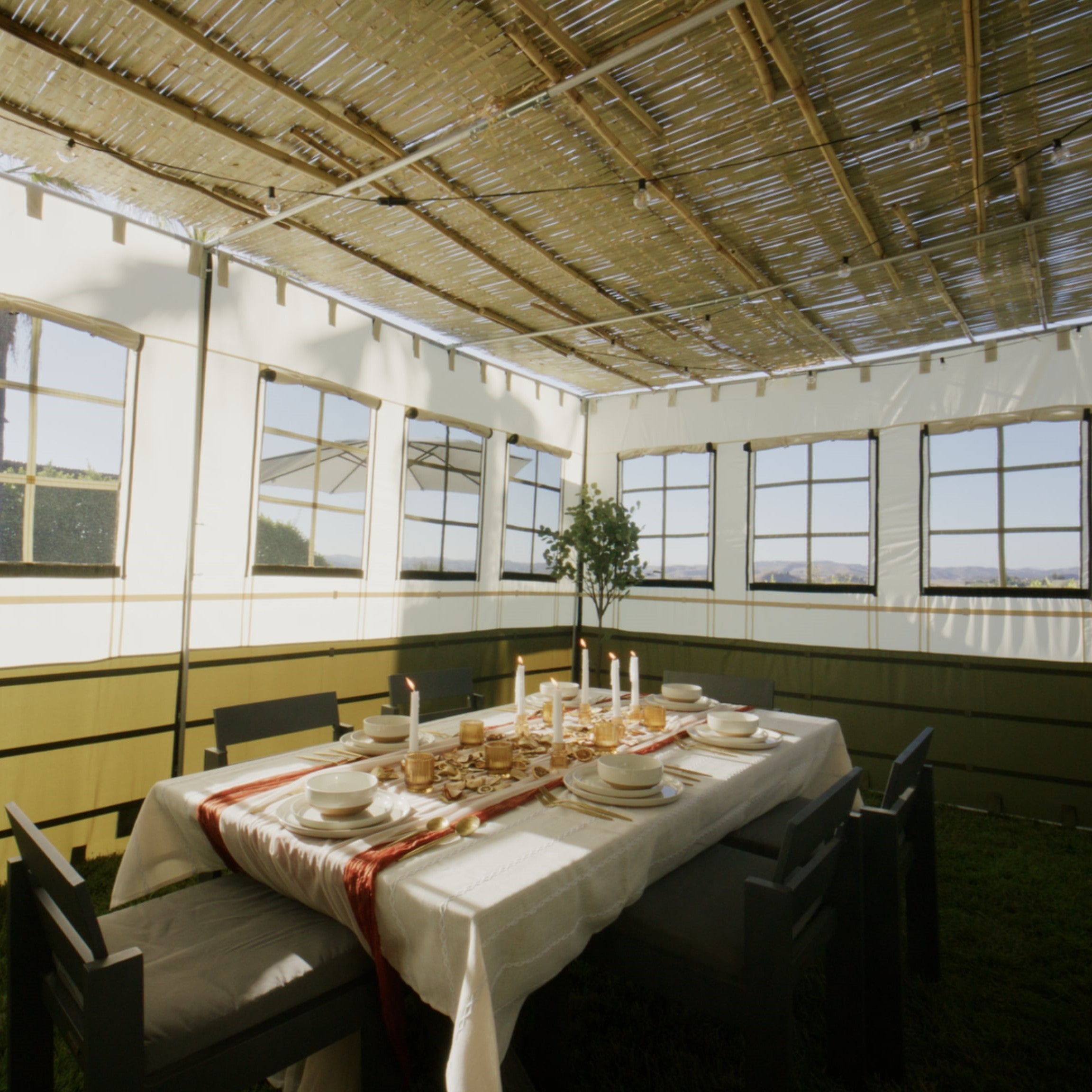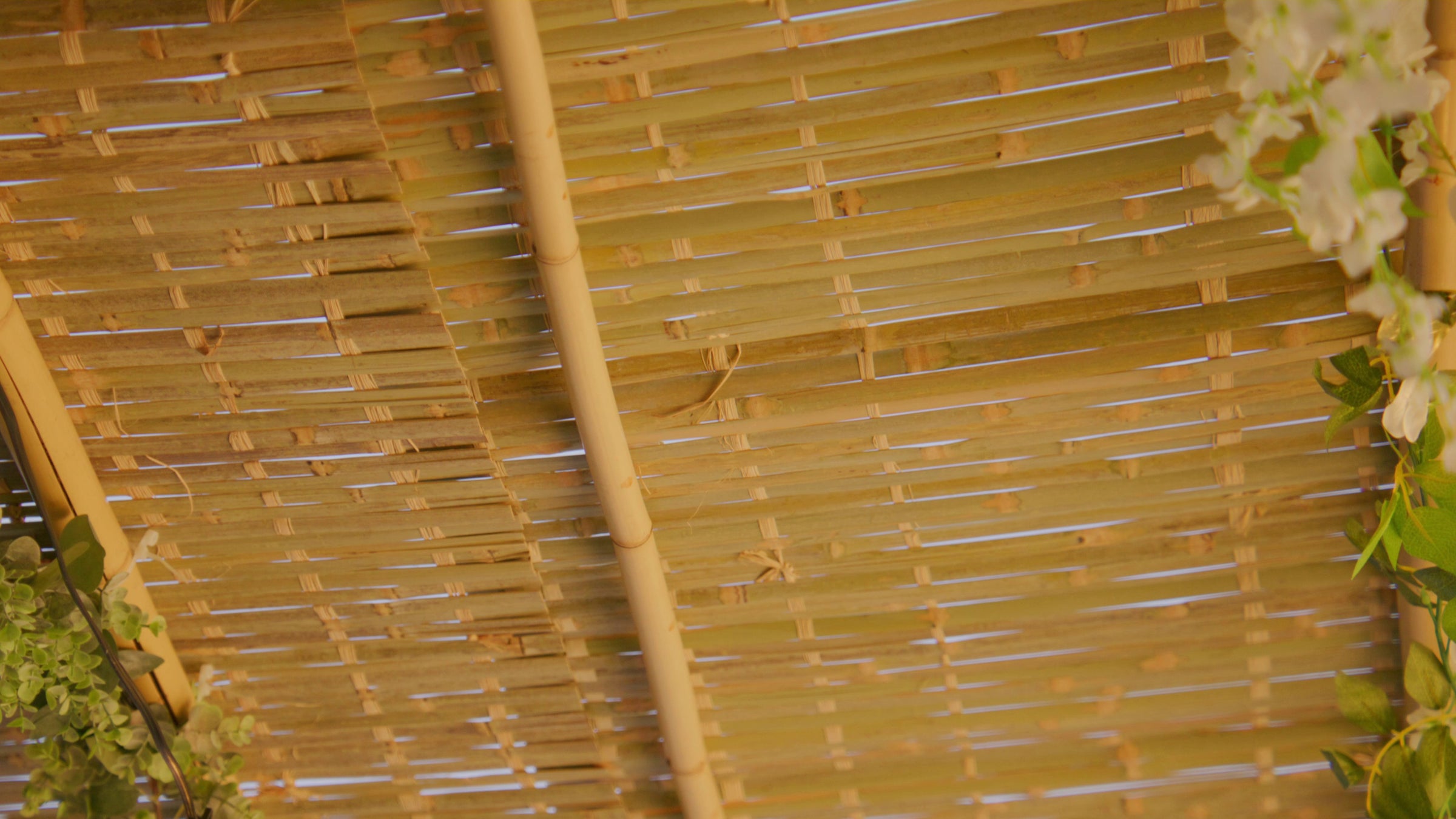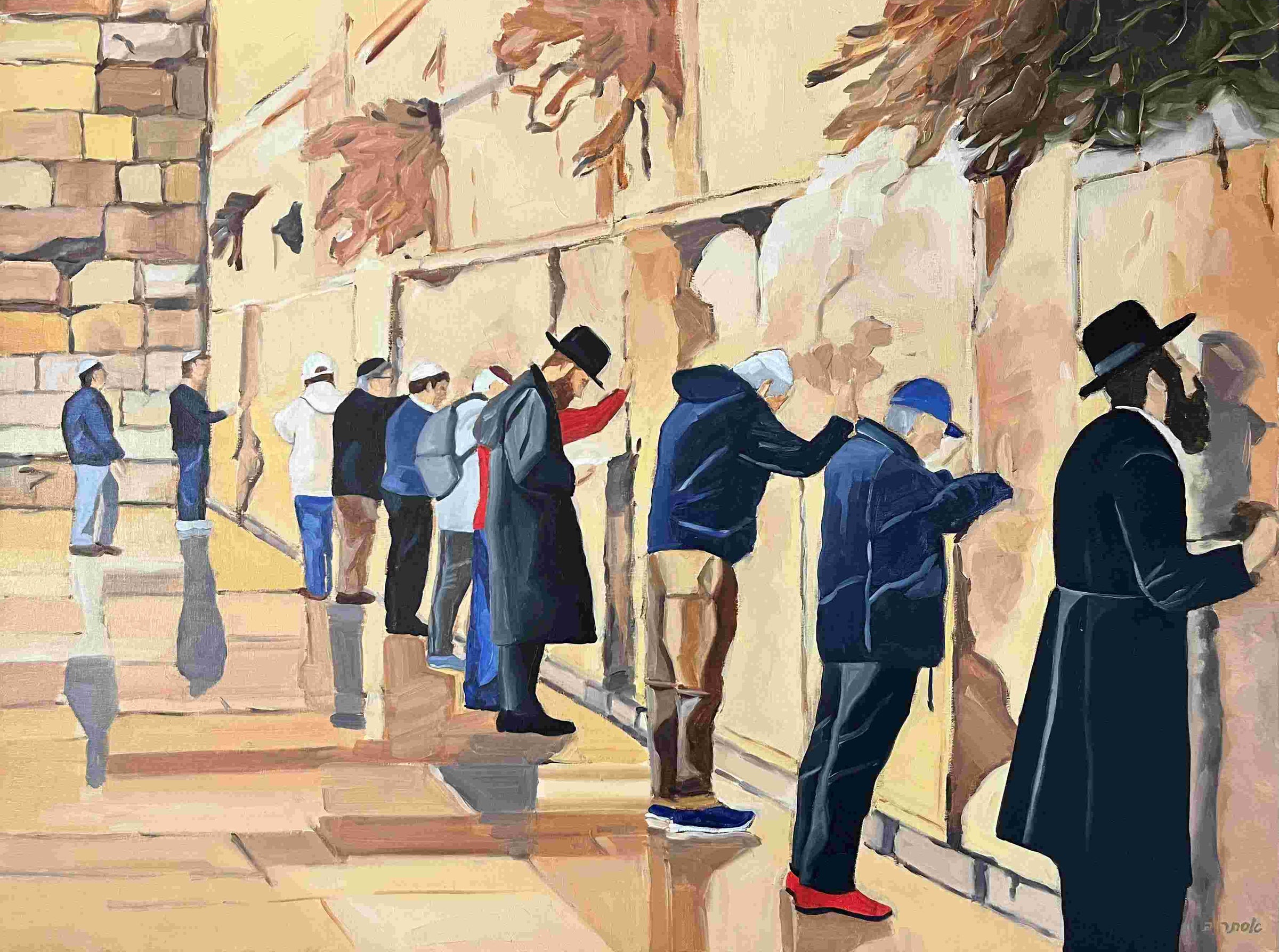

Table of contents
When it comes to building your Sukkah walls , the sky's the limit – well, as long as they don’t blow away in the breeze! Unlike Schach , there's no strict list of what your walls must be made of (for the strict list of Schach requirements, see our Guide to Buying Kosher Schach ). People have gotten creative with everything from convertible roofs to transparent fiberglass , and many have used tightly pulled canvas. If you've got friends who really love you, maybe they'll even stand around you and be your Sukkah walls (just make sure they're committed!).
What’re the Best Materials to Use for Sukkah Walls?
If your Sukkah walls are flapping around like they're in a wind tunnel, that's a no-go. A Sukkah isn't a tent, so you'll need those walls to stay put. If you're using canvas or fabric for your Sukkah walls, tie it down tighter than a toddler clinging to a candy bar. It’s best to start with something solid for at least the first ten tefachim (about 32 inches) from the ground up. You can then weave your fabric into that sturdy base, or drape it over.
And if you're thinking of using a tree or bush as a wall, remember – trees may have deep roots, but their branches need to stay steady during any potential gusty days, so make sure everything is securely tied down, and you'll be all set!
Mind the Gaps: Sukkah Wall Edition
Speaking of sturdy Sukkah walls, let's talk about the rule of lavud, which lets you put a little space between things. Let’s explain.
Imagine you build your Sukkah walls like a picket fence with gaps between each post. As long as those gaps are less than three tefachim (about 9.45 inches or 24 cm), you're in the clear – even if your posts are as skinny as a pencil. This rule works whether the gaps are up-and-down or side-to-side. So, unlike Schach , your wall can be more “air” than “material” and still count as a wall.
And when it comes to windows and doors, no need to stress there either. As long as there’s not a gap wider than ten amot (about 15 feet) in your wall, it’s still considered a solid wall. So, feel free to let the breeze in – just not too much.
The Bent Wall Rule
Here’s a neat trick for your Sukkah-building toolkit:
Let’s say you’ve cleverly used the wall of your house as one of your Sukkah’s required walls – smart move! But what if there's an eave or awning hanging over your Sukkah. Now, that eave isn't kosher Schach, and you can’t fulfill the mitzvah while sitting under it. The big question: Can you still count that house wall as a Sukkah wall?
Lucky for us, there's a handy tradition Moses received at Sinai that saves the day. Imagine if one of your Sukkah walls was bent – would it still count as a wall? The answer is yes, and that’s exactly how we can treat the wall of your house with the eave. It's considered a “bent” wall, which still counts as a wall.
But there’s a catch – bending has its limits. If that eave sticks out more than four amot (about 6 feet), the bent wall rule doesn’t apply. Fortunately, most eaves aren’t that big, so you’re probably good to go. Just remember to keep everyone sitting inside the proper Sukkah area, away from that non-kosher eave!
For more pro. tips on Sukkah-building, see our collection of guides below:
